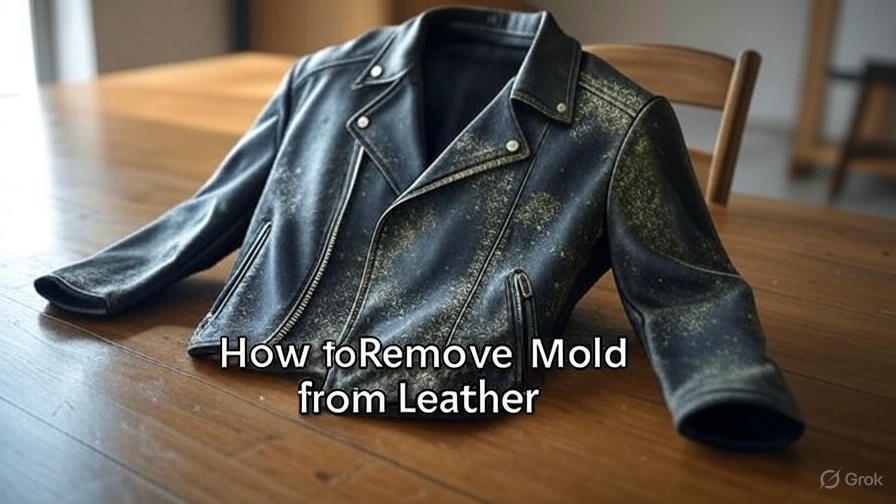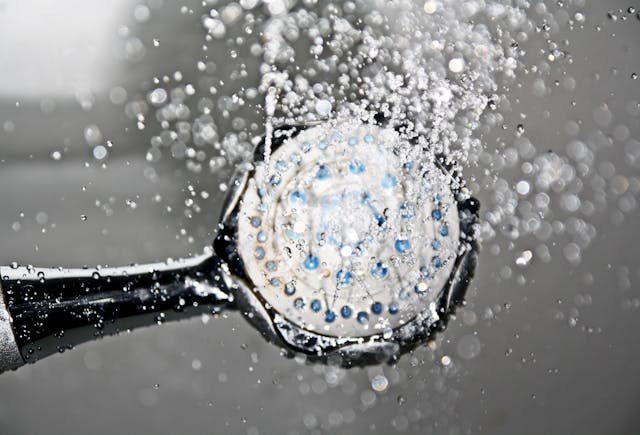Leather items are cherished for their durability, elegance, and timeless charm. However, mold on leather can quickly turn your prized possessions into an unsightly health hazard. Whether it’s a leather jacket, bag, furniture, shoes, or car upholstery, learning how to remove mold from leather safely is key to preserving its texture, look, and lifespan.
This comprehensive guide will walk you through every step of cleaning mold from leather, including DIY solutions, professional options, and tips for preventing mold from returning. Equipped with the right materials, techniques, and precautions, you can restore your leather items to their original glory while keeping them mold-free for years to come.

What Causes Mold on Leather?
Leather’s natural properties make it especially prone to mold growth. Its porous texture absorbs moisture, while residual dirt and oils provide food for mold spores. Below are the most common factors contributing to the problem:
- Excessive Humidity or Moisture
Leather is highly sensitive to moisture. High humidity environments, accidental liquid spills, or prolonged exposure to damp areas can trigger mold growth. For example, leather furniture stored in a basement or shoes left in wet conditions are common victims. - Poor Ventilation
Areas with limited airflow, such as closets or sealed storage units, can trap moisture and create the perfect conditions for mold to thrive on leather items. - Temperature Changes
Fluctuating temperatures, especially in humid climates, can cause condensation to form on leather surfaces. This moisture invites mold spores to settle and grow. - Organic Matter
Dirt, oil, and food particles left on leather act as nutrients for mold. Cleanliness is a crucial factor in preventing this problem. - Improper Storage
Storing leather in plastic bags or tightly enclosed spaces without breathable coverage can encourage moisture buildup, turning your possession into a mold hotspot.
By identifying and managing these factors, you can protect your leather items from the onset of mold.
What Are the Signs of Mold on Leather?
Detecting mold on leather early can save you time, effort, and the potential for irreversible damage. Here are some signs to watch out for:
- Visible Discoloration
Mold often appears as green, black, white, or gray patches on the surface of leather. These spots can vary in size, texture, and intensity depending on the severity of the infestation. - Musty Odor
One of the clearest indicators of mold is a persistent musty smell. This musty scent often intensifies in areas with poor ventilation. - Texture Changes
Mold can make leather sticky, slimy, dusty, or rough to the touch, differing from leather’s usual smooth and supple texture. - Hidden Growth
Mold tends to grow in inconspicuous spots, such as under seams, inside pockets, or along the lining of leather furniture or car seats. Ensure you check less visible areas thoroughly.
Tip: Mold and mildew may look similar but are slightly different. Mildew often grows flat, is typically gray or white, and is easier to remove. Both require attention to prevent further harm to your health and belongings.
Tools and Materials Needed to Remove Mold from Leather
Gathering the right tools and cleaning agents is essential for effective leather mold removal. Using the wrong materials could damage your leather or fail to fully address the mold problem.
Cleaning Supplies:
- White Vinegar
Natural and effective against mold spores without harming the leather’s texture. - Rubbing Alcohol (Isopropyl Alcohol)
Helps disinfect leather and tackle persistent mold spots. - Leather Cleaner or Saddle Soap
Specifically designed to clean leather safely and restore its sheen after mold removal. - Mild Dish Soap
Suitable for general cleaning to remove dirt and oils.
Tools:
- Soft Microfiber Cloths
These are gentle on leather and perfect for wiping away debris. - Soft-Bristled Brush
Useful for gently scrubbing mold without scratching the surface. Ideal for textured leather like nubuck or suede. - Spray Bottle
Allows you to evenly apply cleaning solutions. - Vacuum Cleaner with HEPA Filter
Removes mold spores effectively from large leather surfaces, such as couches or car interiors.
Protective Gear:
- Gloves
Protects your hands from mold, cleaning chemicals, and stains. - Face Mask
Prevents the inhalation of airborne mold spores. - Goggles
Shields your eyes from mold particles or splashes of cleaning solutions.
Ensuring you have these tools and materials on hand will make the cleaning process smoother and reduce the risk of damaging your leather.
Step-by-Step Guide to Remove Mold from Leather
1. Prioritize Safety
Always work in a well-ventilated area, such as outdoors or near an open window. Mold spores can spread easily and may cause respiratory discomfort. Wear gloves, goggles, and a face mask to protect yourself during the cleaning process.
2. Remove Loose Mold
Using a soft cloth or a vacuum with a HEPA filter, gently lift away any visible mold from the surface of the leather. Avoid pressing hard, as you don’t want to embed the spores deeper into the material.
3. Prepare a Cleaning Solution
Combine one part white vinegar with one part water in a spray bottle. Alternatively, for stubborn or larger mold patches, mix one part rubbing alcohol with one part water for a stronger solution. Make sure the solution is safe for your type of leather before application.
4. Apply the Solution
- Spray or lightly dampen a soft microfiber cloth with the cleaning solution.
- Gently dab or wipe the mold-affected areas, making sure to avoid soaking the leather. Excess moisture can worsen the problem or cause additional damage.
5. Clean Thoroughly
For tougher stains or ingrained mold, use a soft-bristled brush to lightly scrub the surface. Be gentle, especially on delicate leathers like suede or nubuck.
6. Rinse and Wipe
After cleaning, wipe the leather with a separate damp cloth to remove any residue from the cleaning solution.
7. Dry the Leather
Pat the leather with a dry cloth to absorb any remaining moisture, then allow it to air-dry completely in a cool, well-ventilated area. Avoid direct sunlight or heat sources, which can crack or deform the leather.
8. Apply Conditioner
Once the leather is completely dry, use a leather conditioner to restore its softness and protective oils. Conditioning also creates a barrier against future moisture-related issues.
9. Perform a Final Check
Inspect your leather item for any lingering mold or odor. Repeat the process if necessary for stubborn cases.
Professional Mold Removal Options
DIY mold removal is effective for light to moderate infestations, but some situations call for professional intervention:
- Severe Mold Damage
If mold has spread extensively or penetrated deeply into the leather, professional cleaning techniques may be required. - High-Value Items
For designer or sentimental leather goods, it’s safer to have experts handle the cleaning. - Persistent Problems
Recurrent mold suggests unresolved moisture or storage issues that professionals can identify and correct.
Local leather restoration experts or mold remediation services will have the tools and expertise to safely restore your leather belongings.
How to Prevent Mold on Leather
Prevention is key to protecting your leather items from mold. Here are some actionable tips:
- Store Properly
Always store leather items in cool, dry, and well-ventilated spaces. Avoid using plastic bags for storage; opt for breathable fabric covers instead. - Use Dehumidifiers
High indoor humidity is one of the leading causes of mold growth. A dehumidifier can help maintain a controlled setting, especially in rooms with leather furniture. - Regular Cleaning
Dust and wipe down leather items periodically to remove any dirt or organic substances that mold spores may use to grow. - Condition and Protect
Apply leather protectants and conditioners every few months to create a moisture-resistant barrier. - Improve Air Circulation
Use fans or open windows to promote airflow in spaces where leather items are kept. - Inspect Periodically
Check leather goods every few weeks, particularly in the rainy season or in humid locations, to catch any signs of mold at an early stage.
When to Replace Instead of Clean
Not all leather items can be salvaged after a mold infestation. Consider replacing the item in the following cases:
- The mold has deeply penetrated porous leather and compromises its structure.
- Extensive damage has caused discoloration or cracking beyond repair.
- The item poses health risks due to stubborn or lingering mold growth.
FAQs About Mold Removal on Leather
Can I use household bleach to clean leather?
No, bleach is too harsh for leather and can cause irreparable damage, including discoloration and stiffening.
How long does it take to remove mold from leather?
The process typically takes a few hours, depending on the severity of the infestation and drying times.
What is the best mold cleaner for leather?
White vinegar and rubbing alcohol are effective natural remedies, while commercial leather cleaners provide tailored solutions.
Conclusion
Removing mold from leather may seem daunting, but with the right techniques and materials, you can safely and effectively restore your cherished items. Whether you choose DIY methods or professional help, prioritizing preventive measures will ensure your leather stays beautiful and mold-free for years to come.
Need mold removal assistance? Contact our experts now for a free consultation!

Anamika is a passionate writer for Eco365Store.com, specializing in topics that inspire a cleaner, greener world. With expertise in home cleaning, recycling, and eco-friendly solutions, she crafts engaging and informative articles that help readers adopt sustainable practices in their daily lives.

